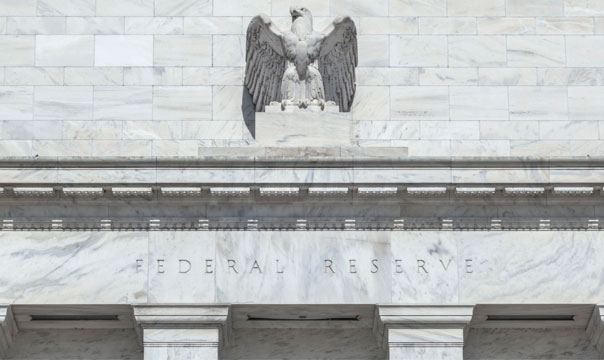Source: U.S. Bank Asset Management Group, January 2023
Key takeaways
Commodities prices soared in 2021 and 2022 as demand for products and supply disruptions affected the market, but have moderated since.
Commodity prices are subject to significant volatility.
The outlook for commodity prices going forward is mixed, but there may be ways to position your portfolio to benefit from the current environment.
Inflation became the major economic story beginning in 2021, as we experienced higher-than-average increases in living costs. In news reports about inflation, references are often made to “the volatile food and energy sectors.” Prices in these categories tend to be less predictable than other components of inflation because they’re tied to worldwide commodity market trends. Commodity prices played a major role in inflation’s surge that began in 2021, and also contributed to a pullback from peak inflation levels since mid-2022.
Commodities comprise a range of raw materials such as:
- Energy products including crude oil and natural gas
- Metals such as gold, silver, copper and platinum
- Agricultural products including wheat, corn, sugar and coffee
Commodities represent close to 40% of the Consumer Price Index (CPI) calculated by the U.S. Bureau of Labor Statistics. More specifically, energy represents about 7.5% of the index and food close to 14%.1 Commodity prices can add significant volatility to headline CPI numbers. At the same time, expenses like groceries, gas to fuel motor vehicles and home heating and cooling are essential costs facing consumers. Justifiably, commodity prices garner significant attention.
What is the likely direction of commodity prices going forward, and should your portfolio reflect these trends?
Oil prices level off
Commodity price trends dating back to 2020 provide a prime example of the volatility that can impact this segment of the economy. For example, crude oil prices closed at $10.17/barrel in April 2020, just as the global economy was in the midst of a virtual shutdown in the early days of the COVID-19 pandemic. That unsustainably low-price level reflected fears of far-reaching economic fallout arising from the pandemic and activity restrictions. However, emergency monetary and fiscal stimulus measures and gradual reopening resulted in an economic rebound. Oil demand steadily rose while supplies remained relatively stagnant. In early June 2022, the price of a barrel of crude oil topped $120. That lofty price level did not hold. Since late 2022, the price of oil mostly traded in a range of $70 to $80/barrel.2
“Trends in oil prices reflect supply and demand expectations for the global economy,” says Tom Hainlin, national investment strategist at U.S. Bank. “The sudden decline later in 2022 demonstrated that many traders, who drive prices on the futures market for commodities, anticipated an economic slowdown in the coming months.”
“Trends in oil prices reflect supply and demand expectations for the global economy.”
Tom Hainlin, senior investment strategist at U.S. Bank Wealth Management
Oil prices dropped below $70/barrel in March 2023 in the immediate wake of bank failures, including Silicon Valley Bank and Signature Bank. “Oil markets exhibited renewed speculation that the bank issues could result in slower growth, or even people pulling back on travel plans this summer,” says Rob Haworth, senior investment strategy director at U.S. Bank.
Other commodity prices rise
While the rate of economic growth slowed in 2022, it is not yet clear that the U.S. economy is headed into a recession. While oil prices dropped in early 2023, other commodities, such as agricultural products and metals gained in price. Bank-related concerns led some investors to seek the relative safety of the bond market. “Gold is another investment viewed by some as a safe haven,” says Haworth. After declining in the first two months of 2023, gold prices rallied in March.
Haworth notes that prices for other metals used for industrial applications, such as copper, are more closely tied to economic growth expectations. “Supplies for many industrial metals are relatively tight today,” says Haworth. “While economies may be slowing in many parts of the world, China is boosting stimulus spending which may boost demand for copper and other metals.”
The Russia-Ukraine war created a notable surge in prices for agricultural commodities. Both Russia and Ukraine are major exporters of wheat and other farm products. “Investors priced in a premium with the conflict, fearing lost supplies,” says Haworth. “In normal times, agricultural prices run on an annual cycle, with prices driven by the quality of the growing season for different crops.” The premium tapered off in the closing months of 2022, and Haworth says factors like the quality of the growing season are once again the primary concern for commodities traders.
Nevertheless, with the war now into its second year and with no clear path to a resolution, agricultural deliveries could again be affected. Ukraine’s significant agricultural output seems particularly vulnerable. “Questions remain in terms of how much can be harvested and how easy it will be to transport those commodities,” says Haworth. “The war increases the risk that prices for agricultural commodities could be pushed higher.”
Longer-term supply concerns
Energy demands are likely to hold up over the long term, even with the increased focus on reducing carbon emissions to combat climate change. At the same time, supplies may not change dramatically compared to where they stand today. “OPEC and others did not put much new investment into infrastructure that could boost production,” says Haworth. “Five-year rolling inventory levels are low, so if demand for oil picks up, prices are likely to rise as well.” Haworth notes that with China’s economy re-opening following the repeal of its “zero-COVID” policy, that could boost global demand.
Hainlin agrees that the current environment differs from what has been a usual trend in the energy industry. “Normally, when prices go up like we saw after the start of the Russia-Ukraine war, producers expand capacity. Then they reach a point of overcapacity and prices drop,” says Hainlin. “This typically leads to a boom-and-bust cycle. But instead, oil producers demonstrated significant capital discipline.” That may keep production levels down, which could support elevated oil prices.
Investor considerations around commodities
Investors may consider including commodities in a portfolio to hedge the impact of higher inflation. Both Hainlin and Haworth say there are limited benefits with commodities investments. “It’s difficult to earn a durable return with direct investments in commodities or commodity futures,” warns Hainlin.
“The primary challenge in doing so is that historically, it’s a very volatile asset class,” says Haworth. “Investing in commodities often requires that you make two good decisions – to buy at the right time and to sell at the right time.”
Yet there are other approaches that can provide portfolio benefits in certain environments. One effective way to capitalize on today’s commodities market is through investments in infrastructure. This includes companies involved in oil pipelines, airports, cell towers, toll roads and other forms of infrastructure. “There is strong demand in many of these areas today,” says Hainlin, “but benefitting from owning these investments doesn’t always require that prices move higher. These investments also generate regular income for investors.” Hainlin says companies in infrastructure-related businesses tend to have fixed costs but realize bigger profits in times when inflation drives prices higher.
Investors should be prepared for frequent changes, both higher and lower, in commodity prices. Talk with your financial professional about opportunities to position your portfolio to capitalize on market trends stemming from the commodities trade.
Tags:
Related articles

Analysis: Assessing inflation’s impact
Learn what persistently higher inflation could mean for your finances and if there’s any end in sight to higher prices.

Federal Reserve recalibrates monetary policy to fight inflation
With the Federal Reserve raising interest rates and no longer providing liquidity to the bond market, investors should prepare for change as the Fed continues its fight to lower inflation.
